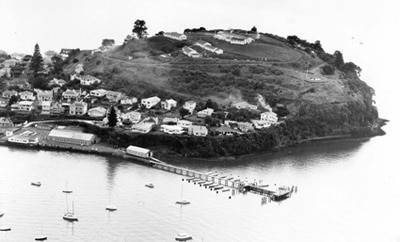Torpedo Bay – Te Hau Kapua has attracted people through time and it’s no wonder why.
Its position at the mouth of the Waitematā Harbour was long ago recognised as an excellent vantage point for defence.
It also provides spectacular views for modern day café patrons and picnickers.
Tucked in the South West base of Maungauika – North Head, Torpedo Bay offers shelter, both from prospective enemy fire as well as from winds off the harbour.
The fertile, free draining volcanic soil was as attractive to the first settlers from Polynesia as it is to the modern inhabitants of Devonport’s waterfront villas.
Read more about the history of the Torpedo Bay site up to the present day.

